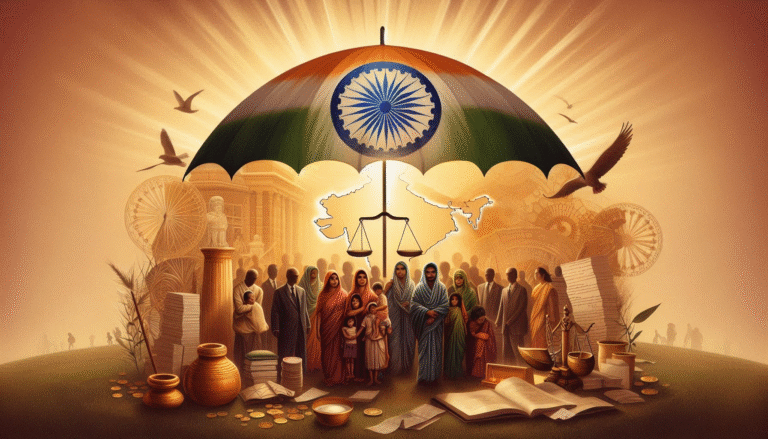
From Oppression to Empowerment: The Struggle for Racial Justice

I. Introduction
Background Information on Racial Oppression
Systematic prejudice and discrimination against people and organizations based on their race or ethnicity is known as “racial oppression.” Throughout history, this kind of tyranny has existed and has been supported by a number of social, economic, and political organizations.
Racist persecution has been particularly pervasive in the United States against African Americans and other people of color. Slavery, segregation, and discriminatory laws and practices are only a few of the various manifestations of this tyranny.
For instance, African Americans were denied fundamental human rights and treated as property throughout the time of slavery. Segregation laws that enforced racial segregation in public places including schools, housing, and transportation were placed in place after the Civil War and the abolition of slavery.
Racial discrimination has continued in a number of ways even after the Civil Rights Movement of the 1960s.For example, discrimination in the workplace, housing and education, police brutality, and mass incarceration are still present issues. These issues have resulted in significant disparities in income, health outcomes, and social mobility between people of different races. (“The Civil Rights Movement., 2020)
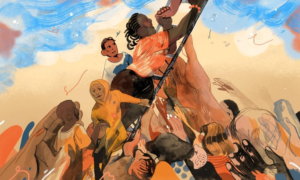
Importance of the struggle for Racial Justice
For several reasons, the fight for racial justice is of utmost importance. First off, racial discrimination has long been a problem in many civilizations across the world, including those in the United States, and it has harmed people of colour significantly.
Numerous sorts of injury have been used to do this, including physical and mental abuse, social exclusion, and economic hardship. To ensure that everyone is treated with dignity and respect, it is crucial to combat racial injustice.
Second, the larger social and political systems are significantly impacted by racial inequality. For instance, prejudice and inequality may result in societal unrest, unstable governments, and ineffective economies. On the other hand, advancing racial justice can result in a society that is more unified, egalitarian, and successful.
Thirdly, advancing human rights and social justice depend on the fight for racial justice. Regardless of colour or ethnicity, everyone has the right to be treated equally and without prejudice. We are attempting to maintain these essential rights and beliefs through promoting racial fairness.
Finally, the fight for racial justice is crucial to creating a society that is more varied and inclusive. We can create better communities and generate more empathy and understanding amongst people from all origins by fostering diversity and inclusion. This can therefore contribute to the development of a more tranquil, equitable, and just world for everybody.
Purpose of the Report
The report’s goal is to give a broad picture of the fight for racial justice, including everything from its historical origins to current problems and activities.
Specifically, the report is intended to provide readers with a deeper understanding of the following:
- The racial oppression in America’s past, includes instances of discriminatory laws and practices and how they affected people and communities.
- The main movements and leaders in the fight for racial justice, as well as the methods they used, as well as their victories and setbacks.
- the current level of racial disparity in the US and ongoing initiatives to end racism and advance fairness.
- A call to action for people and communities to support the fight for racial justice as well as the significance of ongoing efforts to achieve racial justice.
By making this information available, the report hopes to increase readers’ knowledge of the ongoing fight for racial justice and inspire them to take personal action to end racism, advance equality, and support that fight. The study also intends to foster greater understanding and empathy amongst individuals from all backgrounds and to contribute to larger discussions about social justice and human rights.
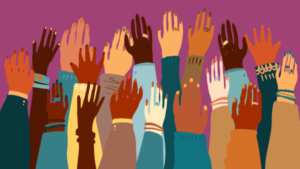
II. Historical Context of Racial Oppression
Overview of the History of Racial Oppression in the United States
Since the country’s beginnings as a colony of settlers, there has been a long and complicated history of racial discrimination in the United States. Slavery, which was legal in the US from its creation in 1776 until the end of the Civil War in 1865, was one of the most severe forms of racial oppression in the nation.
Millions of Africans were forcefully removed from their homes during this time and sent to the Americas as slaves, where they were denied fundamental human rights and regarded as property.
Slavery was abolished after the Civil War, but racial discrimination persisted in other ways. For instance, racial segregation in public places like schools, housing, and transportation was enforced through segregation laws that were placed in place.
These laws, which were common in the southern US until the middle of the 20th century, were meant to uphold white supremacy and keep persons of color out of the public eye.
In the United States, racial oppression continued throughout the 20th century in a variety of various ways, such as through unfair laws and regulations, economic exploitation, and physical and psychological abuse. For instance, black people were often denied the right to vote, denied access to economic and educational opportunities, and were subjected to violence and intimidation by white supremacists during the Jim Crow era in the southern United States.
Even in today’s America, racial discrimination persists as a serious problem, albeit in more covert and sneaky ways. For instance, there are still problems with mass imprisonment, police brutality, housing discrimination, and education and housing challenges. Significant differences in income, health outcomes, and social mobility between persons of various races have been caused by these problems.
Examples of Discriminatory Policies and Practices
The History of Racial Persecution in the US has unfortunately included discriminatory laws and practices.
Here are some examples of such policies and practices:
- Jim Crow Laws: Jim Crow laws were a series of state and municipal laws that maintained racial segregation and discrimination against black people in the southern United States. These regulations, which were common between the late 19th century and the middle of the 1960s, were created to uphold white supremacy and keep persons of colour out of the public eye. Laws that required segregated public facilities for black and white people, such as schools, bathrooms, and transportation, are examples of Jim Crow laws.
- Redlining: Redlining was a racist practice employed by banks and other lending organizations to refuse loans or other financial services to those residing in neighbourhoods with a high concentration of black people or other minorities. This technique, which was common in the middle of the 20th century, played a part in how people of colour were economically excluded from property ownership and other types of wealth accumulation.
- Mass Incarceration: People of colour make up a disproportionately large share of the prison population in the United States, which has one of the highest rates of imprisonment in the whole world. The war on drugs and other discriminatory policies, which have been demonstrated to disproportionately affect black and brown populations relative to white communities, are partly to blame for this.
- Voter Suppression: Voter suppression is a tactic used to keep some individuals from casting ballots. This can take many different forms, such as gerrymandering, voter ID legislation, and voter roll purge. These procedures have been used to restrict the voting rights of black people and other minority groups, and they disproportionately affect people of colour.
Effects of racial oppression on individuals and communities
Racist oppression has far-reaching and potentially disastrous repercussions on people and communities.
Here are some examples of how racial oppression has impacted people of colour throughout history:
- Economic Disadvantage: People of colour frequently experience economic hardship as a result of racial injustice. Their access to work, education, and other opportunities has been restricted by discriminatory policies and practices, making it more challenging for them to amass wealth and establish financial security. As a result, compared to white people, individuals of colour are more likely to live in poverty and face financial difficulty.
- Social Marginalization: People of colour have experienced social marginalization as a result of racial oppression. Their exclusion from particular social settings and activities as a result of stereotypes and discriminatory attitudes makes it challenging for them to fully engage in society. Feelings of alienation, disconnection, and a lack of belonging may result from this.
- Physical and Emotional Violence: People of color have frequently experienced both physical and psychological violence in conjunction with racial persecution. For instance, during the time of slavery, slaves were regularly the victims of rape, beatings, and other violent crimes. Black activists saw regular assault from police and other authorities throughout the Civil Rights Movement. individuals of color are still more likely than white individuals to be victims of hate crimes and police brutality today.
- Health Disparities: The differences in health between persons of various races are partly a result of racial discrimination. Because they are systematically underrepresented in society, people of color are more prone to encounter health issues including diabetes, heart disease, and obesity. This is partly because living in such a culture can be stressful.
III. Movements for Racial Justice
Overview of Key Movements and Leaders in the Struggle for Racial Justice
The fight for racial justice in the United States has seen several significant movements and leaders.

Here are some of the most significant:
- The Civil Rights Movement: To eradicate racial segregation and prejudice against black people, the Civil Rights Movement was a social and political movement that spanned the 1950s and 1960s. Martin Luther King Jr., Rosa Parks, and Malcolm X served as the movement’s leaders. It was characterized by several peaceful demonstrations and acts of civil disobedience, including sit-ins, boycotts, and marches.
- Black Lives Matter Movement: The acquittal of George Zimmerman in the murder of Trayvon Martin sparked the emergence of the modern movement known as Black Lives Matter in 2013. The movement aims to end the systemic abuse and oppression that black people endure, especially at the hands of police enforcement. Patrisse Cullors, Opal Tometi, and Alicia Garza are some of the movement’s key figures. (About Black Lives Matter., n.d.)
- The Underground Railroad: Black slaves in the 19th century utilized a network of covert passageways and safe homes known as the Underground Railroad to elude capture and reach freedom. People like Harriet Tubman, who frequently travelled to the South to aid slaves in escaping to freedom, served as the movement’s leaders. (The Underground Railroad., n.d.)
- The Black Panther Party: In the 1960s and 1970s, there existed a political group called the Black Panther Party. The party attempted to address problems including police brutality and poverty in black neighbourhoods as well as promoting black self-defence and self-determination. Huey Newton and Bobby Seale were important party figures. (The Black Panther Party., 2020)
- The Anti-Apartheid Movement: The global Anti-Apartheid Movement worked to abolish South Africa’s system of racial segregation and prejudice. Leaders of the movement included Nelson Mandela, Desmond Tutu, and Winnie Mandela. It was characterized by a series of rallies, boycotts, and divestment initiatives. (Anti-Apartheid Movement., n.d.)
Strategies and Tactics Employed by these Movements
The strategies and tactics employed by movements for racial justice have varied depending on the time and the specific goals of the movement. (Strategies and Tactics of the Civil Rights Movement., n.d.)
Here are some examples of strategies and tactics that have been used:
- Nonviolent Resistance: Nonviolent resistance has been a popular social change tactic in several struggles for racial justice. This includes strategies like sit-ins, boycotts, strikes, and marches that aim to upend the existing quo and pressure those in authority to address the complaints of the oppressed.
- Civil Disobedience: Some racial justice groups employ the method of civil disobedience, which is violating the law or ignoring orders in order to call attention to the injustices experienced by underprivileged people. This strategy was employed by activists in groups like the Civil Rights Movement to draw attention to the injustice of segregation by purposefully flouting segregationist laws.
- Legal Action: Legal action has occasionally been employed as a change agent by movements for racial justice. This involves bringing legal action against discriminatory acts, advocating for changes to laws and regulations, and using the legal system to do so. The NAACP Legal Defence and Educational Fund, for instance, has been crucial in utilizing the legal system to fight racial discrimination in employment, housing, and voting rights.
- Mass Mobilization: Some racial justice groups employ a tactic called mass mobilization, which entails getting a lot of people together to foster a sense of strength and togetherness. This includes strategies like marches, demonstrations, and rallies that may be used to create public pressure for change.
- Education and Awareness: Some racial justice groups have emphasized education and awareness raising as a strategy of bringing about change. Public speaking, community organizing, and media outreach are a few examples of strategies that may be used to increase understanding of the problems that disadvantaged people confront and to foster support for change.
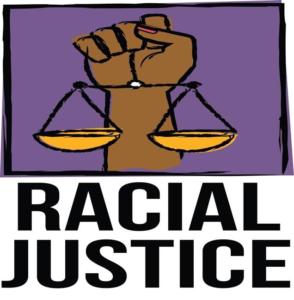
Successes and Challenges of these Movements
Throughout history, racial justice movements have had numerous notable achievements as well as major obstacles and defeats.
Here are some examples of successes and challenges faced by movements for racial justice:
Successes:
- Civil Rights Act of 1964: In the workplace, in the school, and in public settings, discrimination based on race, colour, religion, sex, or national origin was illegal by the Civil Rights Act of 1964. This was a major victory for the Civil Rights Movement and helped put an end to legal segregation in the United States.
- Brown v. Board of Education: In 1954, the Supreme Court ruled in Brown v. Board of Education that segregation in public schools was unconstitutional. This was a significant win for the civil rights movement that opened the door to further equality and inclusion in the classroom.
- Voting Rights Act of 1965: A federal statute known as the Voting Rights Act of 1965 forbade discriminatory voting practices including literacy tests and poll fees and made guaranteed that everyone had equal access to the right to vote. This contributed to the expansion of voting rights for people of color and was a significant win for the Civil Rights Movement.
Challenges:
- Backlash and Resistance: Racial justice movements frequently encounter opposition and hostility from individuals who feel threatened by the changes they are pushing for. Violence, intimidation, and efforts to undo progress can all fall under this category.
- Divisions within Movements: Racial justice movements frequently include of individuals from a variety of backgrounds, views, and objectives. This may result in conflicts and divides within the movement, which might make it harder to accomplish common objectives.
- Structural Inequality: Racial justice movements frequently struggle to overcome deeply ingrained structural disparities like institutional racism and economic inequality. Even after big triumphs, it may be challenging to bring about long-lasting change due to these structural obstacles.
IV. Contemporary Issues in the Struggle for Racial Justice
Current State of Racial Inequality in the United States
While there have been significant gains in the struggle for racial justice in the United States, there is still a significant amount of racial inequality that persists today.

Here are some examples:
- Economic Inequality: In the US, there are notable differences in wealth and income across different racial groups. Black households, for instance, often have barely a tenth of the wealth of white families. Additionally, people of race are more likely to be poor and face financial difficulties.
- Healthcare Disparities: Significant healthcare inequities affect people of colour in the US as well. They are more likely to face poorer health outcomes, lack access to healthcare, and receive low quality medical care.
- Criminal Justice System: In the US criminal justice system, people of colour are disproportionately represented. They are more likely than white individuals to be detained, found guilty, and given lengthier jail sentences for the same offenses. In addition, police violence and brutality against persons of colour are increasingly common.
- Education: In the criminal justice system in the United States, people of colour are overrepresented. Compared to white individuals, they are more likely to be detained, found guilty, and given lengthier jail sentences. Furthermore, police aggression and brutality against persons of colour are more likely to occur.
- Housing: Significant housing inequities are also present for people of race in the United States. Due to gentrification and other types of urban growth, they are more likely to live in subpar housing, encounter housing discrimination, and be forced out of their houses.
Ongoing Efforts to Combat Racism and Promote Equity
In many various facets of society, continual initiatives are being made to eliminate racism and advance equity.
Here are some examples:
- Criminal Justice Reform: To address problems like mass imprisonment, police brutality, and the unfair treatment of people of colour in the justice system, there is a rising movement to reform the criminal justice system. This covers initiatives to amend laws and regulations as well as neighbourhood-based initiatives to support alternatives to conventional police enforcement.
- Education Equity: Greater equity in education is being increasingly recognized, especially in terms of access to opportunities and resources. This includes initiatives to support diversity and inclusion in classrooms, provide low-income schools greater resources, and address problems like the school-to-prison pipeline.
- Economic Justice: A significant movement is underway to combat economic injustice and advance economic fairness for all. This covers initiatives to raise the minimum wage, expand access to affordable housing, and deal with problems like the racial wealth gap.
- Environmental Justice: The need of addressing environmental racism and advancing environmental justice for all communities is becoming more widely acknowledged. This covers initiatives to deal with the disproportionate effects of environmental risks on communities of colour, support renewable energy sources, and deal with problems like food deserts.
- Political Activism: Young people are becoming more politically active to solve issues of racial justice and advance fairness. Included in this are initiatives to boost voter turnout, advance diverse representation in government, and back candidates and measures that advance equality and justice.
Current Challenges and Opportunities in the Struggle for Racial Justice
Although the fight for racial justice encounters many obstacles, it also offers chances for advancement and development.
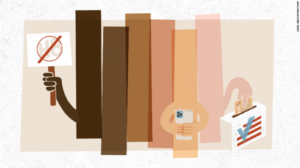
Here are some current challenges and opportunities in the struggle for racial justice:
Challenges:
- Systemic Racism: Achieving racial justice is still significantly hampered by systemic racism in organizations and processes. This covers concerns including discriminatory laws, practices, and policies in the criminal justice system, as well as structural injustices that fuel inequalities in income and health.
- Polarization: Building widespread support for racial justice initiatives may be challenging due to societal polarization and division. This encompasses the polarization of politics as well as the social and cultural divides that can make it challenging to find common ground and cooperate on projects.
- Backlash and Resistance: The opposition and opposition of people who feel threatened by the reforms that movements for racial justice are calling for continues. Violence, intimidation, and efforts to undo progress can all fall under this category.
Opportunities:
- Increased Awareness: Racial justice is becoming more and more necessary, and systematic racism’s effects are being felt even now. This raised awareness offers a chance to catalyze change and include more people in the fight for racial justice.
- Diverse Coalitions: Racial justice groups are forming more and more varied coalitions and partnerships, including ties to other social justice movements. As a result, communities may become more inclusive and egalitarian and there may be a greater sense of solidarity and support for racial justice initiatives.
- Grassroots Activism: Youth in particular are leading a rising grassroots action movement to address racial justice concerns and advance fairness. This includes neighborhood-based projects, online activism, and other types of direct action that can support the development of change.
- Political Change: Recent elections have demonstrated that there is an increasing desire for political change, including more persons of color serving in elected office. This offers a chance to develop programs and policies that support racial fairness and justice.
V. Conclusion
Summary of Key Points
Here is a summary of the key points discussed in our conversation about the struggle for racial justice:
- People of color have been significantly impacted by racial oppression, which has a lasting negative effect on society as a whole.
- In order to bring about change, movements for racial justice have used a variety of methods, including nonviolent resistance, civil disobedience, legal action, mass mobilization, and education and awareness campaigns.
- Throughout history, racial justice movements have had a great deal of success, including the passage of historic laws like the Voting Rights Act of 1965 and the Civil Rights Act of 1964.
- As well as facing tremendous obstacles and defeats, movements for racial justice have also encountered systemic injustice, backlash, and opposition.
- Criminal justice reform, educational equality, economic justice, environmental justice, and political activism are ongoing initiatives to resist racism and advance equity.
- Systemic racism, division, reaction, and resistance are now obstacles in the fight for racial justice. Opportunities include increasing awareness, diversified alliances, grassroots activity, and the possibility of political reform.
Overall, the fight for racial justice is difficult and continuing, but there are many of chances for development and improvement. It will be crucial to keep pushing for more equality and justice for everyone.
Importance of Continued Efforts to Achieve Racial Justice
Racial justice movements must continue because systemic racism and oppression still have a terrible effect on people of colour and their communities. Inequalities and inequities still exist despite major historical development in fields including education, work, housing, healthcare, and the criminal justice system.
In addition to being unfair, these differences have far-reaching effects on society. They erode social cohesiveness and stability, prolong intergenerational poverty, restrict access to opportunities and resources.
To create a society that is more equal and just, ongoing attempts to attain racial justice are crucial. To do this, it is necessary to address structural racism and inequities, foster diversity and inclusion, and make sure that all people and communities have access to the tools and opportunities they require to prosper.
In addition, attaining racial equity is essential for the long-term well-being and success of society. It is not simply morally right to do so. We all gain from the combined skills and abilities of all members of our communities when everyone has an equal chance to thrive.
To put it briefly, ongoing efforts to advance racial justice are necessary to create a society that is more fair, just, and prosperous for all.
Call to Action for Individuals and Communities to Support the Struggle for Racial Justice
There are many ways that individuals and communities can support the struggle for racial justice.
Here are some suggestions for action:
- Educate Yourself: Learning about the past and present effects of racism and oppression is one of the most crucial things you can do to assist the fight for racial justice. This entails reading books, keeping up with news organizations that cover racial justice stories, and searching out other viewpoints and voices.
- Speak Up: When you witness or hear incidents of racism and prejudice, you should speak up. This might entail exposing racist speech or conduct, boosting the voices of people of color, and supporting programs and policies that advance racial justice and equity.
- Build Relationships: Building connections with individuals from various racial and cultural origins can aid in fostering tolerance, empathy, and unity. This entails looking for chances to interact with individuals from other backgrounds, paying attention to their opinions and experiences, and cooperating with them to achieve common objectives.
- Support Organizations: Supporting the numerous groups that are fighting to achieve racial justice and fairness may be a potent approach to change things. This involves making financial contributions, giving of one’s time, and supporting their causes.
- Vote: Voting is an essential part of advancing racial justice and fairness because it enables you to back politicians and initiatives that advance these ideals. It’s critical to do your homework on candidates and topics before casting your vote to effect change.
Overall, continuing dedication and effort are needed to sustain the fight for racial justice. We may strive toward a more fair and equitable society for all individuals by acting in our personal lives and communities.
VI. Works Cited
“The Civil Rights Movement. (2020, 8 20). Retrieved from ” History.com. A&E Television Networks, LLC: https://www.history.com/topics/civil-rights-movement
About Black Lives Matter. (n.d.). Retrieved from http://blacklivesmatter.com/about/
The Underground Railroad. (n.d.). Retrieved from National Museum of African American History and Culture. Smithsonian Institution, n.d.: http://nmaahc.si.edu/blog-post/
The Black Panther Party. (2020, 6 5). Retrieved from A&E Television Networks, LLC: https://www.history.com/topics/civil-rights-movement/black-panthers
Anti-Apartheid Movement. (n.d.). Retrieved from South African History Online. South African History Online, n.d.: http://www.sahistory.org.za/article/anti-apartheid-movement
Strategies and Tactics of the Civil Rights Movement. (n.d.). Retrieved from Facing History and Ourselves. Facing History and Ourselves National Foundation, Inc., n.d.: https://www.facinghistory.org/ civil-rights-movement/strategies-tactics-civil-rights-movement.






